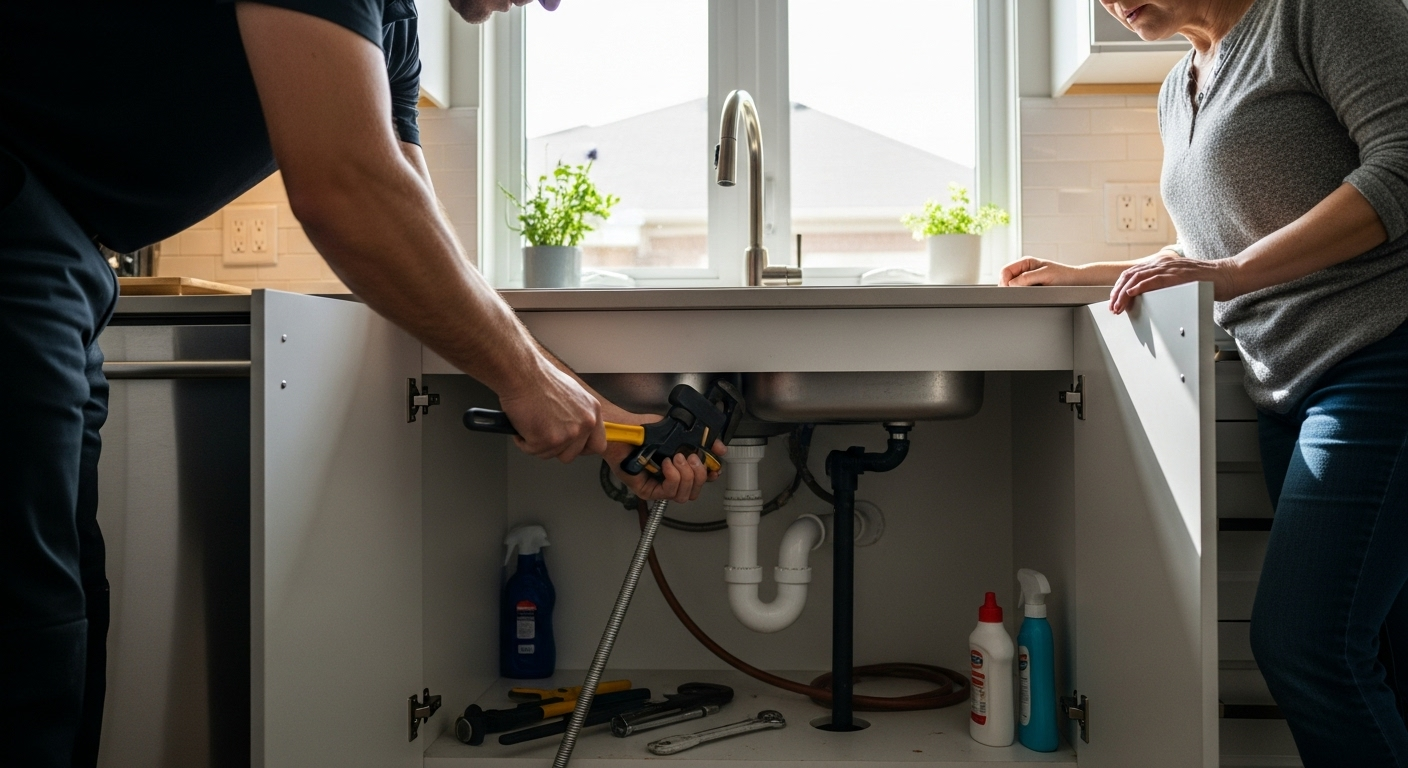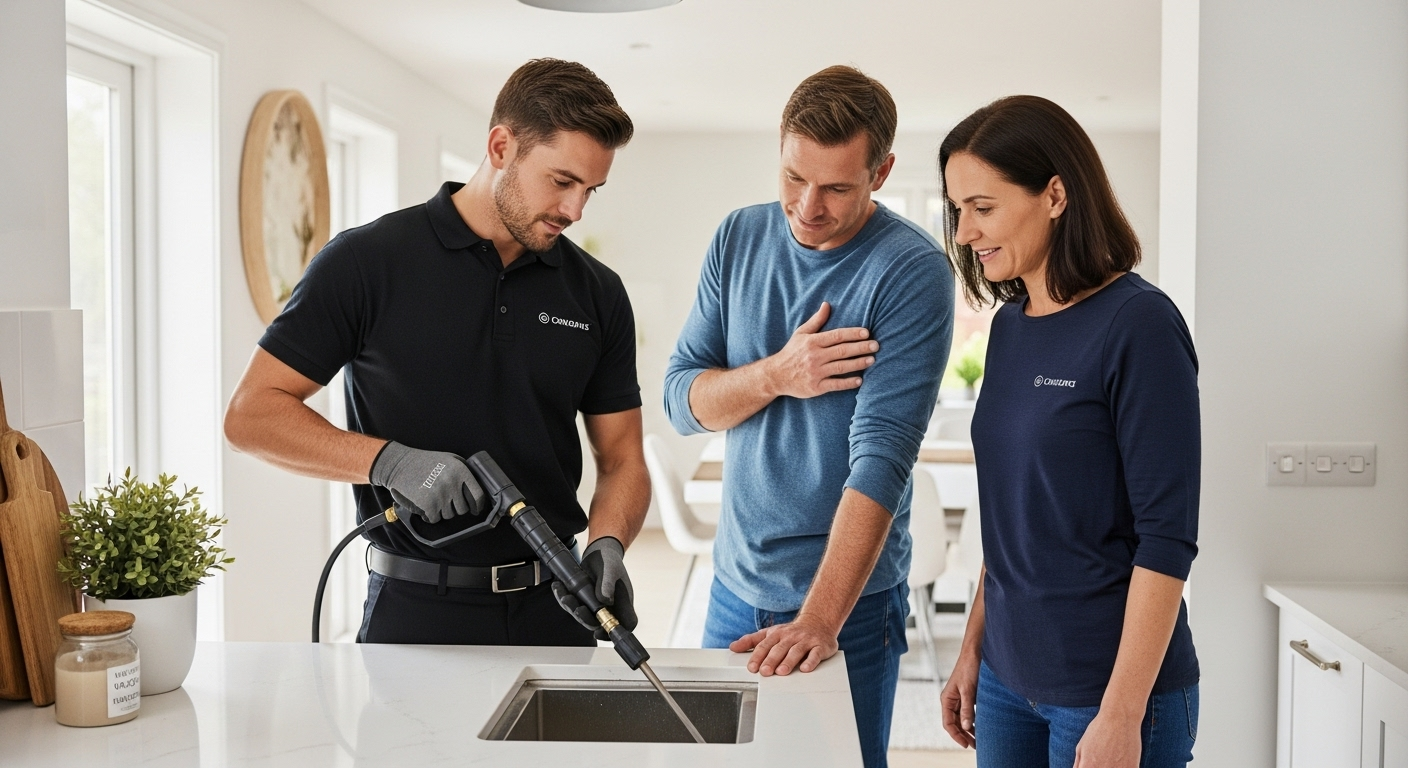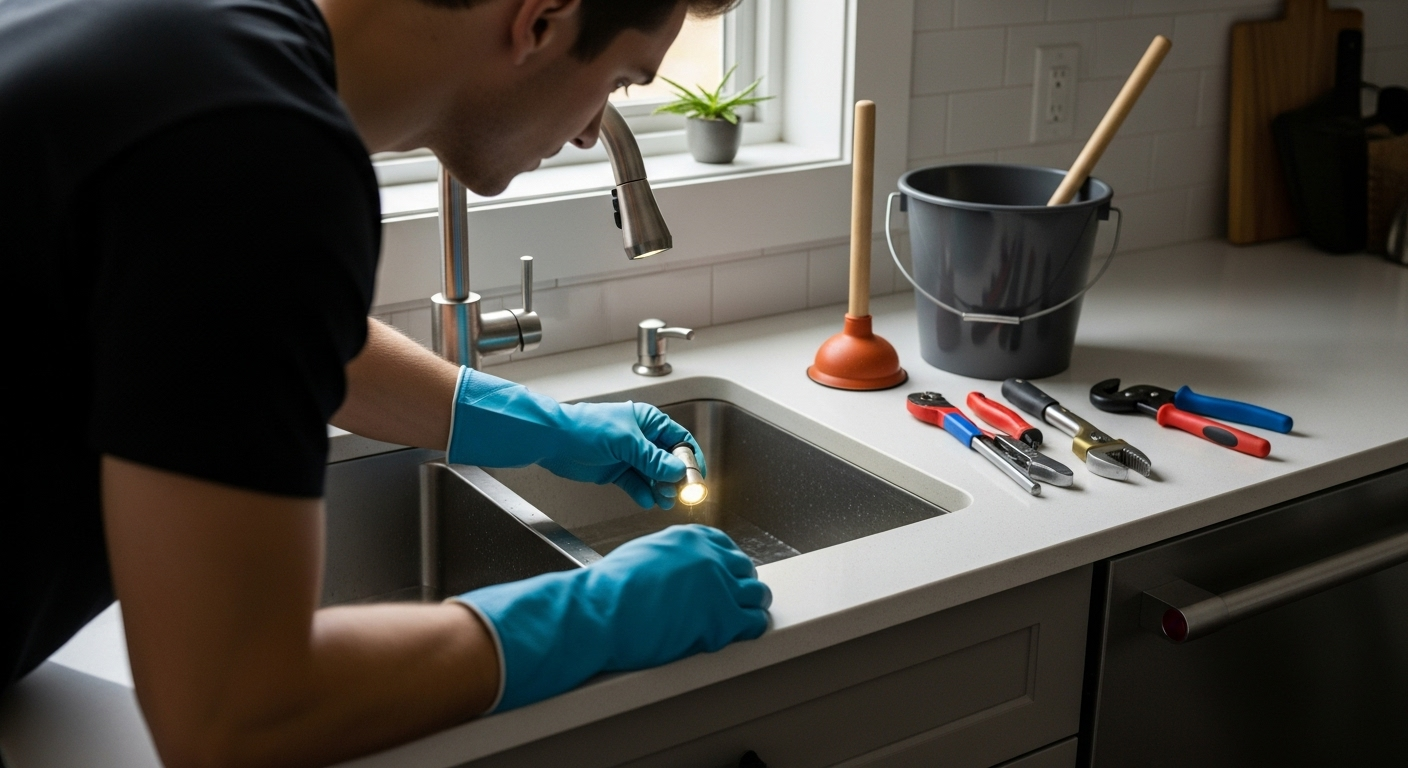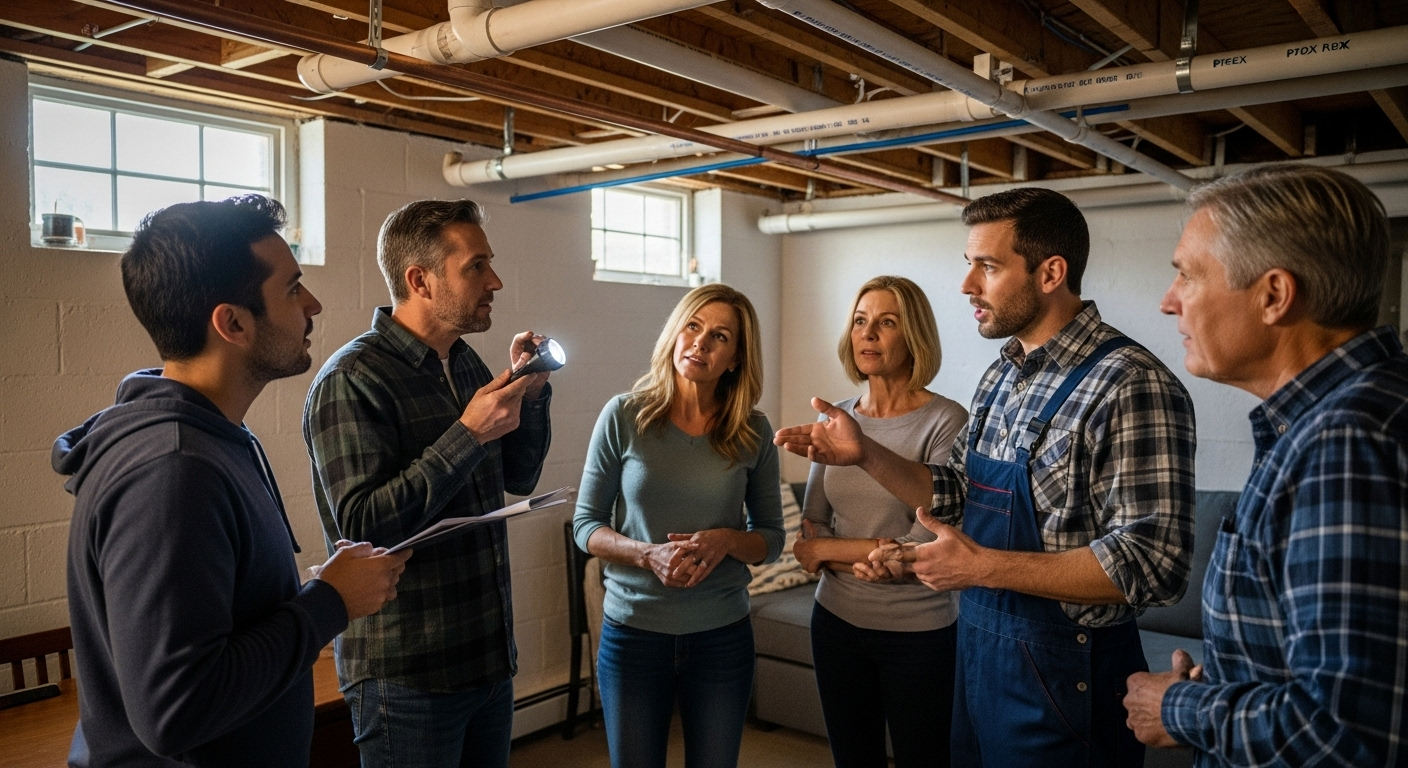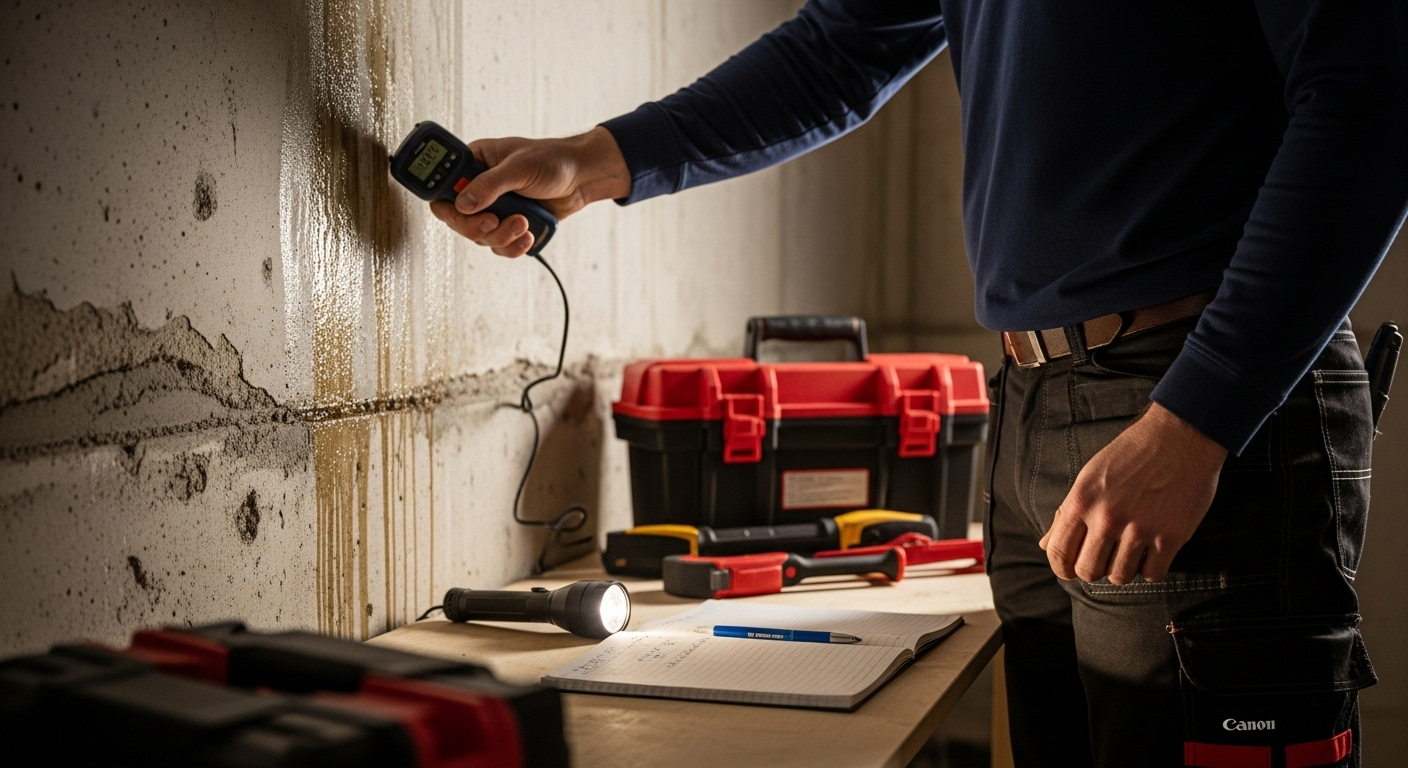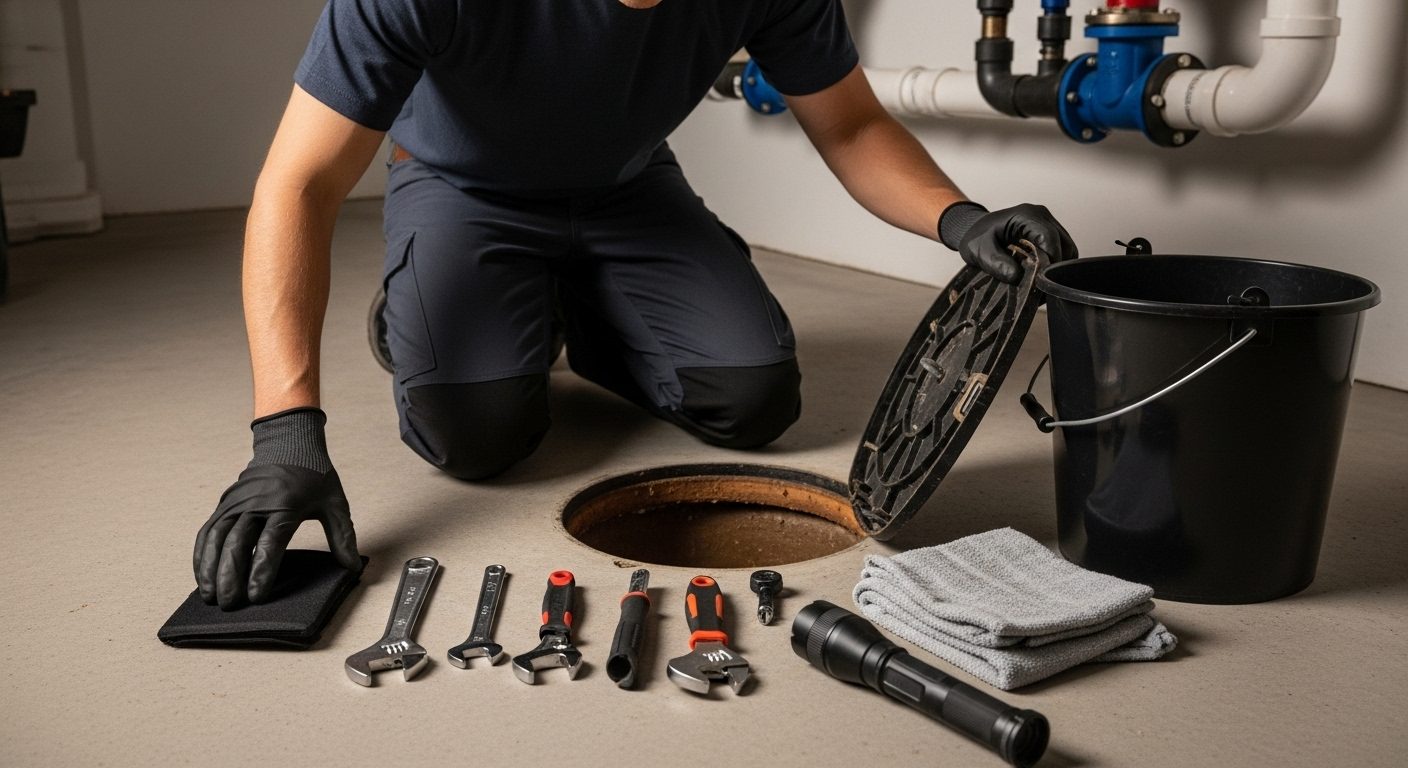Understanding Cast Iron Pipes Replacement Cost for Homeowners
Understanding Cast Iron Pipes Replacement Cost for Homeowners
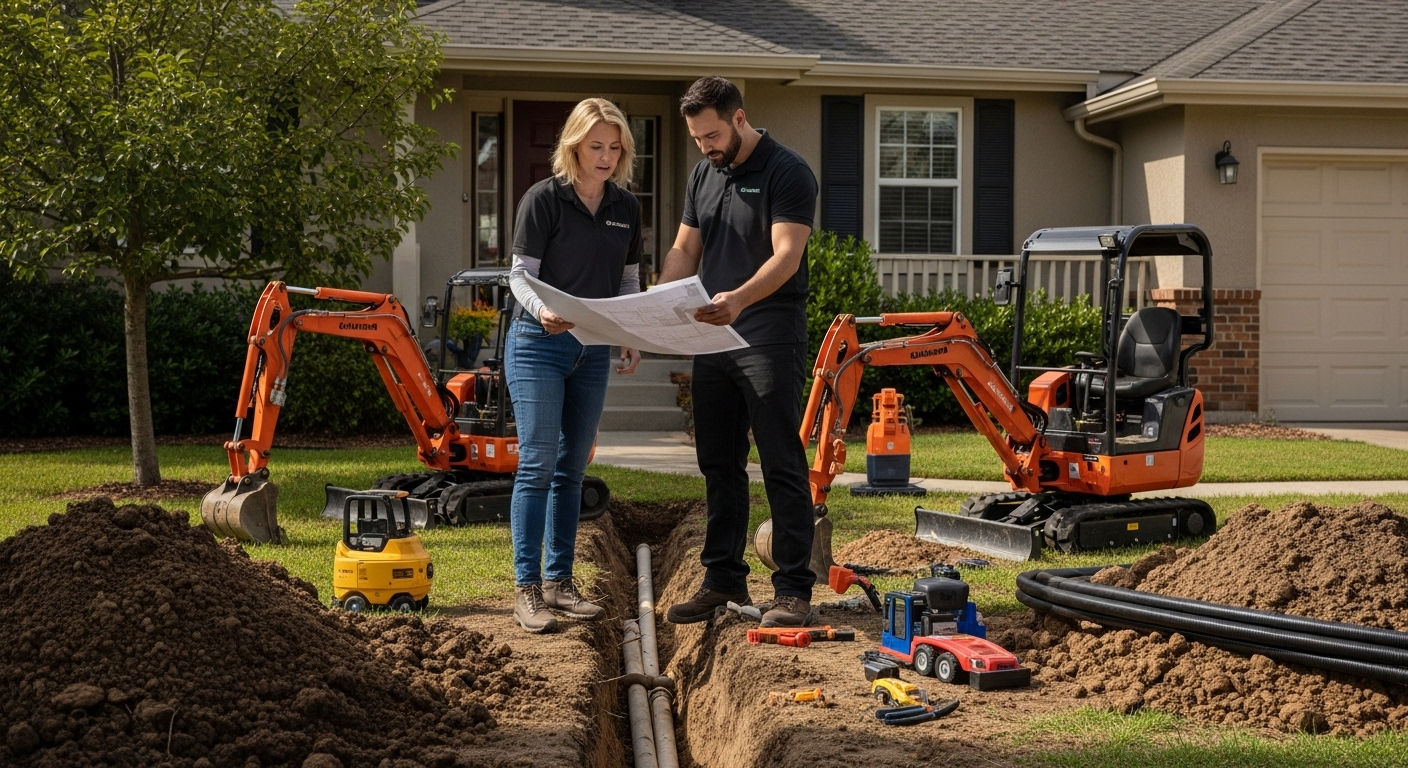
Cast iron pipes have shaped Canadian homes for generations, showing up in nearly every property built before the 1980s. People often say these pipes last forever, but the truth is more complicated. Over 50 percent of older homes in some cities now face serious plumbing risks tied to failing cast iron , and what surprises most homeowners is that these hidden problems could be quietly eroding property value right under their noses.
Table of Contents
Quick Summary
| Takeaway | Explanation |
|---|---|
| Inspect aging cast iron pipes regularly. | Homeowners should prioritize professional inspections to identify deterioration and potential issues before they escalate. |
| Understand replacement costs vary significantly. | Costs depend on factors such as pipe location, size, and installation complexity, so budgeting should consider various variables. |
| Modern materials enhance plumbing reliability. | Replacing cast iron with PVC or composites improves water quality and reduces long-term maintenance needs. |
| Prioritize replacement to prevent water damage. | Aging pipes can cause leaks and structural damage; timely replacement protects the home from costly repairs. |
| Health risks linked to corroded pipes. | Corrosion in old pipes can leach harmful substances into water, posing health threats to residents. |
What Are Cast Iron Pipes and Their Role in Homes?
Cast iron pipes have been a foundational component of residential plumbing systems for over a century. These robust metallic pipes were traditionally used for drainage, sewage, and water transportation throughout homes, playing a critical role in maintaining proper infrastructure and waste management.
Understanding Cast Iron Pipe Composition
Cast iron pipes are manufactured through a precise metallurgical process where iron is melted and poured into molds, creating a strong and durable piping material. They typically feature a dark grey or black appearance and are known for their substantial weight and structural integrity. The unique composition allows these pipes to withstand significant pressure and resist corrosion better than many alternative materials.
Historical Context and Modern Applications
Before the widespread adoption of plastic and PVC alternatives, cast iron pipes were the primary choice for residential and municipal plumbing systems. Homes constructed between the early 1900s and late 1970s predominantly used cast iron for underground drainage and water transportation. While modern construction increasingly relies on newer materials, many older homes still retain their original cast iron pipe infrastructure.
Key characteristics of cast iron pipes include:
- Exceptional durability and long-lasting performance
- Superior sound dampening qualities compared to plastic pipes
- High resistance to mechanical stress and external pressures
- Ability to handle substantial temperature variations
Homeowners with older properties should understand that while cast iron pipes were engineered for longevity, they are not immune to degradation. Over decades, these pipes can experience corrosion, mineral buildup, and structural weakening, which may necessitate professional assessment and potential replacement to maintain optimal home plumbing functionality.
The following table summarizes the key characteristics and advantages of cast iron pipes that were discussed in the context of historical and modern home plumbing systems.
| Characteristic | Description |
|---|---|
| Durability | Known for long-lasting performance and resistance to wear over decades |
| Sound Dampening | Superior at reducing water flow noise compared to plastic pipes |
| Mechanical Strength | Withstands external pressures and mechanical stress effectively |
| Temperature Tolerance | Handles significant temperature variations without compromising integrity |
| Corrosion Resistance | Initially resists corrosion better than other traditional materials, though not immune over time |
| Appearance | Typically dark grey or black with a substantial, heavy profile |
Why is Replacing Cast Iron Pipes Important?
Replacing cast iron pipes is crucial for maintaining the health, safety, and structural integrity of a home’s plumbing system. As these pipes age, they undergo significant deterioration that can lead to numerous critical problems for homeowners.
Structural Degradation and Potential Risks
Cast iron pipes are susceptible to progressive internal and external corrosion over time. This degradation can result in serious structural compromises that threaten the entire plumbing infrastructure. Corrosion causes pipes to thin, develop pinhole leaks, and eventually create substantial ruptures that can cause extensive water damage to a home’s foundation, walls, and interior spaces.
Health and Environmental Concerns
Aging cast iron pipes pose significant health risks beyond structural damage. As pipes corrode, they can leach harmful minerals and metals into the water supply, potentially contaminating drinking water. Rust accumulation and mineral buildup create ideal environments for bacterial growth, including dangerous pathogens that can compromise household water quality.
Key risks associated with deteriorating cast iron pipes include:
- Potential water contamination with rust and mineral particles
- Increased likelihood of bacterial growth
- Reduced water pressure and flow efficiency
- Higher risk of catastrophic pipe failures
Moreover, old cast iron pipes can develop significant blockages and restrictions that impede proper drainage. This can lead to sewage backups, unpleasant odors, and potential structural damage to drainage systems. Our comprehensive cast iron stack repair services can help homeowners address these critical infrastructure challenges before they escalate into more expensive and disruptive problems.
Homeowners with properties featuring original cast iron piping should prioritize professional inspection and proactive replacement strategies. Timely intervention can prevent costly emergency repairs, protect property value, and ensure safe, reliable water and drainage systems for years to come.
Factors Influencing Cast Iron Pipes Replacement Cost
The cost of replacing cast iron pipes is not a straightforward calculation but a complex interplay of multiple variables that can significantly impact the overall expense for homeowners. Understanding these factors helps in developing realistic budget expectations and making informed decisions about plumbing infrastructure repairs.
Pipe Location and Accessibility
One of the most critical determinants of replacement cost is the physical location of the pipes . Underground pipes running beneath foundations, embedded in concrete slabs, or located in hard-to-reach crawl spaces require more intrusive and labor-intensive replacement methods. These challenging locations demand specialized equipment, increased labor hours, and potentially additional restoration work, which dramatically escalates the overall project expenses.
Pipe Dimensions and System Complexity
The size and extent of the cast iron pipe network directly influence replacement costs.
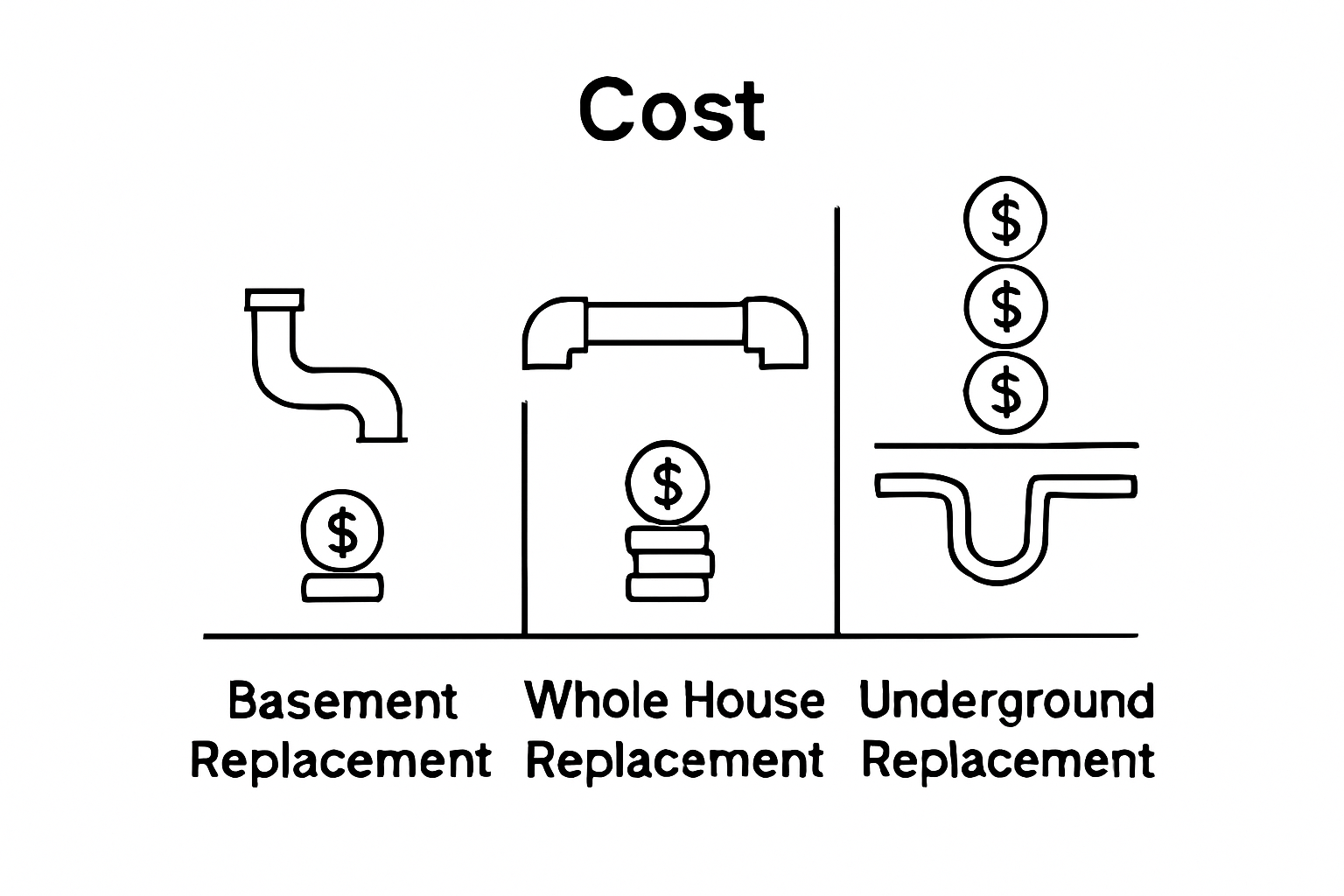 Larger diameter pipes or extensive pipe systems spanning multiple floors and connecting various home sections will naturally require more materials and more complex installation procedures. Homes with intricate plumbing layouts or those featuring multiple branching pipe connections will incur higher replacement expenses compared to simpler, more compact plumbing configurations.
Larger diameter pipes or extensive pipe systems spanning multiple floors and connecting various home sections will naturally require more materials and more complex installation procedures. Homes with intricate plumbing layouts or those featuring multiple branching pipe connections will incur higher replacement expenses compared to simpler, more compact plumbing configurations.
Key cost-influencing factors include:
- Total linear footage of pipes requiring replacement
- Pipe diameter and thickness
- Complexity of existing plumbing configuration
- Depth and accessibility of underground pipe sections
- Required excavation and restoration work
Additional variables that impact replacement costs involve soil conditions, potential structural modifications needed, and the specific techniques employed during pipe removal and installation.
This table details the primary factors that impact the cost of cast iron pipe replacement, as mentioned within the content, to help homeowners develop realistic budget considerations.
| Cost Factor | Impact on Replacement Cost |
|---|---|
| Pipe Location & Accessibility | Hard-to-reach or underground pipes increase labour and restoration needs |
| Pipe Size & System Complexity | Larger diameter pipes and intricate networks require more materials and longer installation times |
| Material Selection | Modern materials (PVC, copper, composites) have different price points impacting overall cost |
| Labour Costs | Region, plumber expertise, and complexity of job affect hourly rates |
| Excavation & Restoration | Extra work for accessing pipes under slabs or landscaping increases expenses |
| Soil & Structural Modifications | Challenging soil or need for foundation reinforcement adds to total cost |
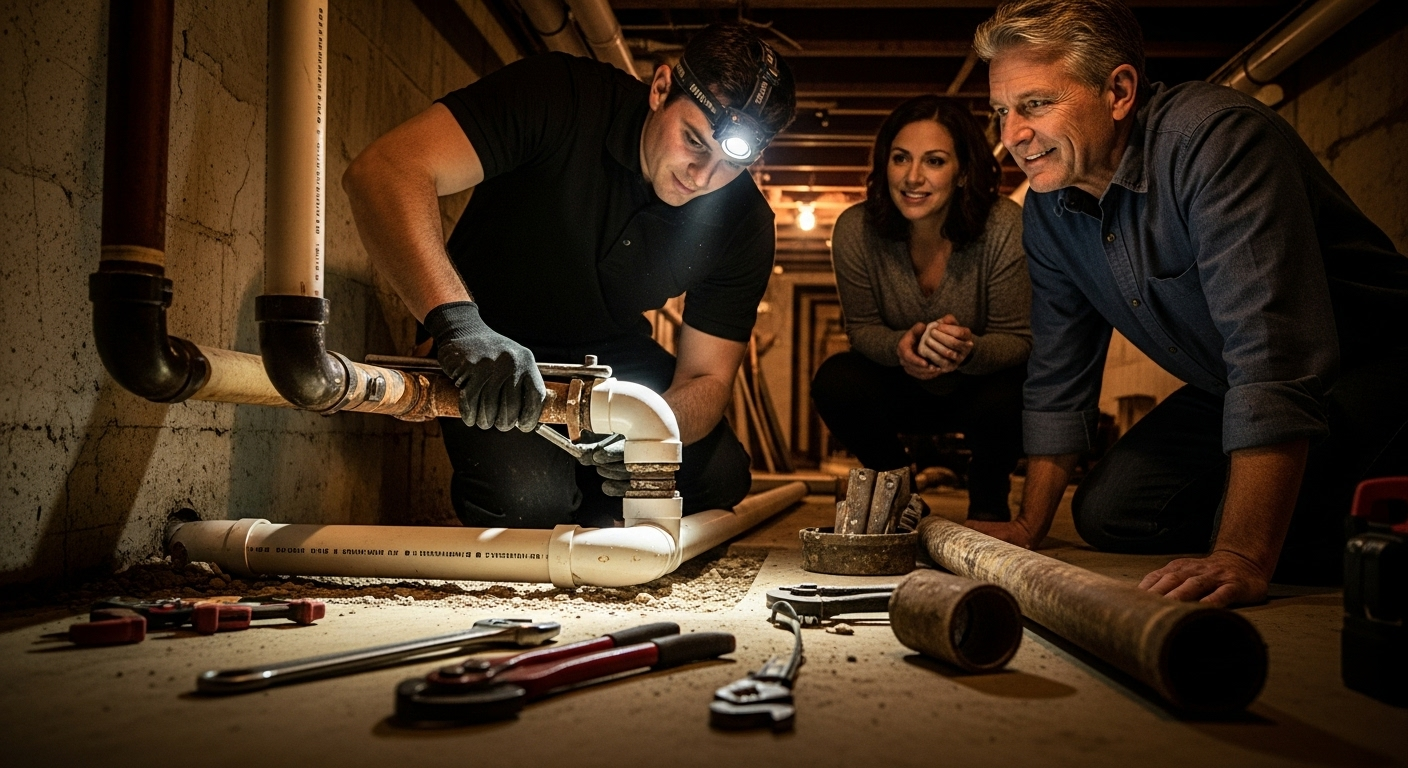 Some properties might require additional structural reinforcement or specialized repair techniques, further contributing to the overall project expense.
Some properties might require additional structural reinforcement or specialized repair techniques, further contributing to the overall project expense.
Material and Labor Considerations
The choice of replacement materials plays a significant role in determining total project costs. Modern alternatives to cast iron pipes include PVC, copper, and specialized composite materials, each with varying price points and installation requirements. Labor costs also fluctuate based on regional market rates, the expertise of professional plumbers, and the complexity of the specific replacement project.
Learn more about our specialized cast iron pipe replacement techniques to understand how professional assessment can provide accurate cost estimates tailored to your specific home infrastructure needs.
Understanding the Process of Replacing Cast Iron Pipes
Replacing cast iron pipes is a sophisticated process that requires professional expertise, specialized equipment, and meticulous planning. Homeowners should understand the comprehensive approach professional plumbers undertake to ensure safe and effective pipe replacement.
Initial Assessment and Diagnostic Procedures
Before any replacement work begins, professional plumbers conduct thorough diagnostic evaluations . This critical first step involves comprehensive pipe inspection using advanced technologies like sewer camera systems and electronic locating equipment. These diagnostic tools help plumbers precisely map the existing pipe network, identify specific damage points, and develop a strategic replacement plan tailored to the home’s unique infrastructure.
Excavation and Pipe Removal Techniques
The physical replacement process demands careful excavation and removal strategies. Plumbers must carefully expose the existing cast iron pipes while minimizing potential damage to surrounding structures. Depending on the pipe’s location, this might involve careful digging around foundations, cutting through concrete surfaces, or navigating complex underground spaces. Specialized hydraulic and pneumatic tools are employed to safely remove corroded pipe sections without compromising the surrounding structural integrity.
Key considerations during pipe removal include:
- Protecting adjacent underground utilities
- Maintaining structural stability of foundations
- Minimizing disruption to landscaping and exterior surfaces
- Ensuring proper soil and debris management
- Implementing safety protocols to prevent potential collapses
Installation of Replacement Piping
Once the old pipes are removed, professional plumbers install new piping systems using modern materials like high-density PVC or specialized composite pipes. The installation process involves precise measurements, careful alignment, and secure connection techniques to guarantee optimal water flow and long-term durability. Proper sealing, joint connections, and slope calculations are essential to prevent future leaks and ensure efficient drainage.
The following table organizes the major steps in the cast iron pipe replacement process, providing homeowners with a clear overview of what to expect during each phase.
| Step | Description |
|---|---|
| Initial Assessment & Diagnostics | Use of cameras and electronic locators to inspect and map existing pipes |
| Excavation & Pipe Exposure | Careful digging and cutting to safely access cast iron pipes with minimal disruption |
| Removal of Old Pipes | Safe extraction of deteriorated pipes using specialized hydraulic or pneumatic tools |
| Installation of New Piping | Placement and secure connection of new pipes using modern materials |
| Sealing & Testing | Ensuring joints are leak-free and drainage slope is correct, followed by thorough testing |
Explore our comprehensive cast iron stack repair services to understand how professional expertise can transform your home’s plumbing infrastructure with minimal disruption and maximum efficiency.
Long-term Impacts of Replacing Cast Iron Pipes
Replacing cast iron pipes represents more than a simple maintenance task. It is a strategic investment that yields substantial long-term benefits for homeowners, extending far beyond immediate plumbing improvements and significantly impacting property value, health, and overall infrastructure reliability.
Property Value and Structural Integrity
Modern pipe replacements directly contribute to enhancing residential property values . By eliminating aging infrastructure prone to corrosion and potential failure, homeowners protect their most significant asset from catastrophic water damage. Updated plumbing systems signal to potential buyers that the property has been meticulously maintained, potentially increasing market attractiveness and resale value. The elimination of potential future repair risks makes the property more appealing to discerning home buyers who prioritize well-maintained infrastructure.
Health and Water Quality Improvements
Modern pipe replacements fundamentally transform a home’s water delivery system. Newer materials like PVC and specialized composites prevent mineral leaching, rust accumulation, and bacterial growth associated with deteriorating cast iron pipes. These improvements ensure cleaner, safer water transmission and significantly reduce potential health risks linked to contaminated water systems.
Key long-term benefits of pipe replacement include:
- Elimination of potential water contamination risks
- Improved water pressure and flow efficiency
- Reduced likelihood of unexpected plumbing emergencies
- Enhanced overall home infrastructure reliability
- Potential reduction in water treatment and filtration requirements
Environmental and Sustainability Considerations
Modern pipe replacement technologies contribute to broader environmental sustainability efforts. Contemporary pipe materials are often manufactured using more environmentally friendly processes and offer superior durability, reducing the frequency of future replacements. Additionally, improved pipe systems contribute to more efficient water transmission, potentially reducing water waste and supporting broader municipal conservation goals.
Learn more about our specialized cast iron stack repair services to understand how professional pipe replacement can transform your home’s infrastructure and provide long-lasting benefits.
Protect Your Toronto Home from Costly Cast Iron Pipe Problems
Are you worried about the risks and rising expenses that come with aging cast iron pipes? Structural weaknesses, water contamination, and unexpected system failures are more than just minor inconveniences—they can lead to significant repair bills and disrupt your entire home. Homeowners like you deserve a plumbing solution that is proactive, reliable, and professionally tailored to your unique needs. The information in this article highlights just how critical timely pipe inspection and replacement can be for your property and health.
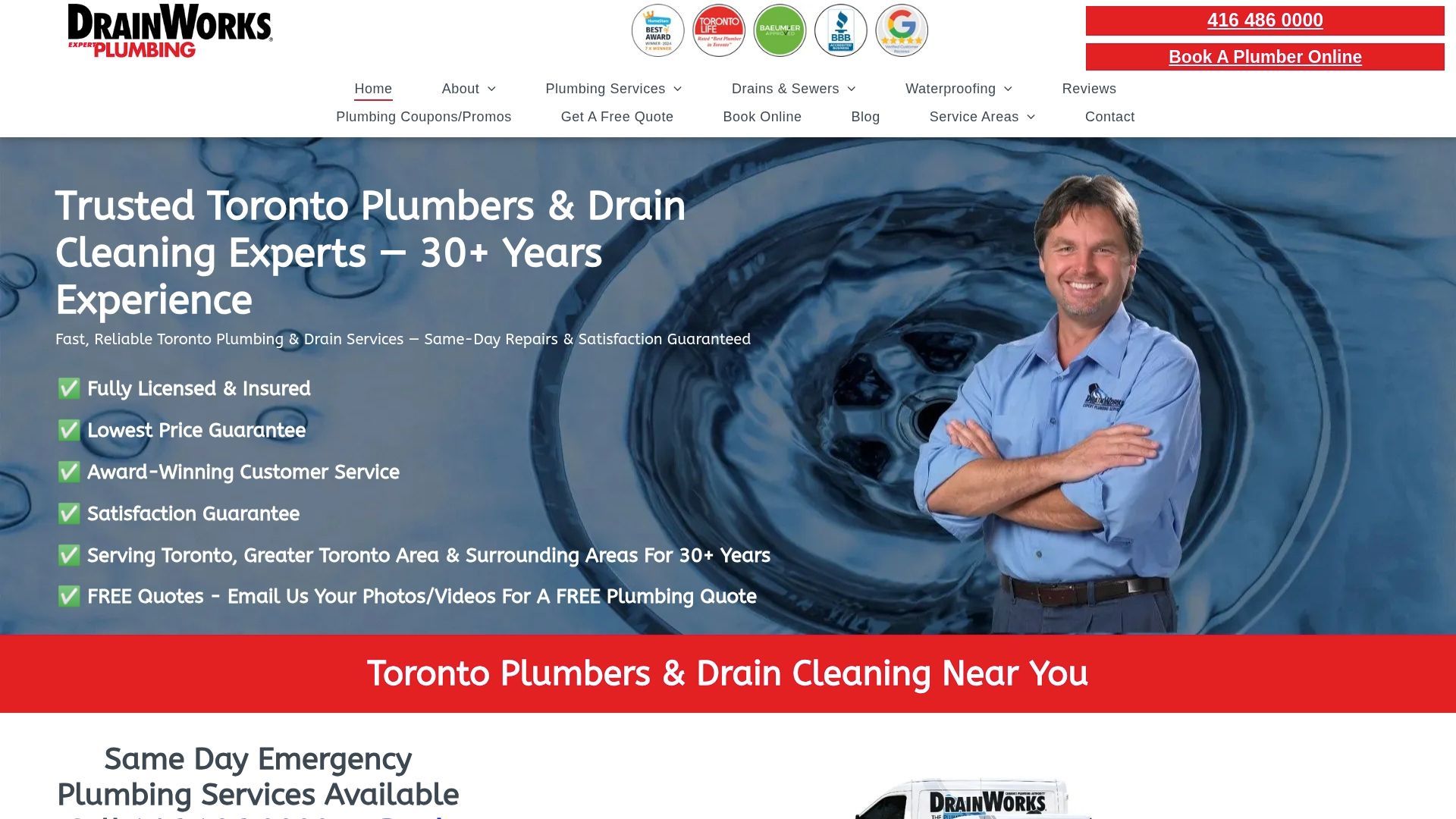
If your home has cast iron drains or sewer lines, let the experienced team at DrainWorks Plumbing provide the peace of mind you need. We have served Toronto since 1995 and bring over 30 years of industry expertise, award-winning service, transparent up-front pricing, and skilled plumbing solutions you can trust. Our team offers same day emergency service, advanced camera inspections, and full cast iron pipe replacements that help you avoid emergency repairs and protect your investment.
Act now to safeguard your plumbing and property value. Visit DrainWorks Plumbing to schedule your expert assessment and learn more about trusted cast iron stack repair services designed for Toronto homes.
Frequently Asked Questions
What factors influence the cost of replacing cast iron pipes?
The cost of replacing cast iron pipes is influenced by several factors, including the location and accessibility of the pipes, the size and complexity of the plumbing system, and the materials and labor involved in the replacement process.
Why is it important to replace aging cast iron pipes?
Replacing aging cast iron pipes is crucial for preventing structural damage, ensuring safe drinking water, and maintaining a reliable plumbing system. Deteriorating pipes can lead to leaks, water contamination, and significant repair costs if not addressed promptly.
What materials are commonly used to replace cast iron pipes?
Modern replacements for cast iron pipes often include materials such as PVC, copper, or specialized composite pipes, which are more resistant to corrosion and easier to install compared to traditional cast iron.
What is the process of replacing cast iron pipes like?
The process involves initial assessments using diagnostic tools, careful excavation and removal of old pipes, and the installation of new piping systems. Professional plumbers ensure proper alignment, sealing, and drainage to prevent future issues.




